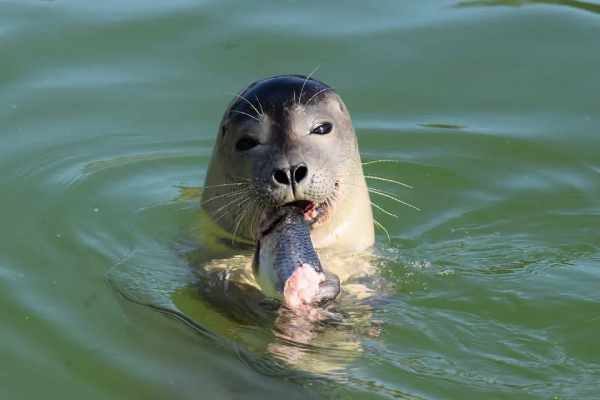Quebec is a wildlife heaven, home to an impressive variety of animals. From the majestic moose to the busy beaver, visitors to Quebec’s forests, national parks, and natural areas are treated to an unforgettable wildlife experience.
With over 650 animal species, including 300 bird species and 90 mammal species, the region is a top destination for nature enthusiasts from around the world.
Whether spotting white-tailed deer along the roadside or catching a glimpse of a caribou on a hiking trail, Quebec’s residents never fail to amaze visitors with their wild beauty.
Select the option of your choice to navigate directly to any section regarding animals in Quebec.
Table of Contents
Beaver
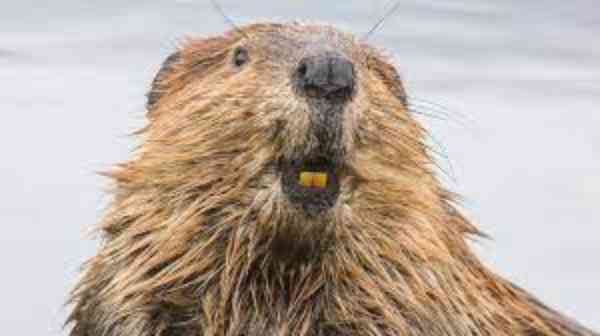
Beavers in Quebec can be found in various locations, including national parks and specific areas known for beaver activity. Here are some notable places to observe beavers in Quebec:
Aiguebelle National Park: This park is recognized for its high beaver population and is often regarded as the national emblem of the park. The presence of beavers is quite common here, providing ample opportunities for sightings.
Jacques Cartier National Park: Located near Quebec City, this park offers the Le Scotora trail, where beaver dams can be observed during hikes. Keep an eye out for beavers while exploring this scenic trail.
Pointe-Taillon National Park: Situated near the Saguenay region, this wetland park is home to several beaver colonies. The chances of spotting beavers are quite good in this area.
Plaisance National Park: Although a smaller park near Gatineau, it is known to have a beaver population. Exploring the park’s natural surroundings may lead to beaver sightings.
Oka National Park: This park, located near Montreal, is another potential spot for observing beavers. The park’s diverse habitats offer opportunities to encounter these semiaquatic rodents.
Domaine le Pic Bois Inc: While not a national park, this site allows visitors to witness beavers for a fee. It can be a great option for observing beavers in a controlled environment.
Pourvoirie du Lac Moreau: Located in the Charlevoix region, this destination offers wildlife tours where beavers can be seen, along with other animals.
The best time to spot beavers in Quebec is generally early in the morning or during twilight hours when they are most active. Beavers can be observed throughout the year, as they remain active both in the summer and winter seasons.
Remember to practice responsible wildlife viewing and maintain a respectful distance to avoid disturbing the animals and their habitats.
Caribou
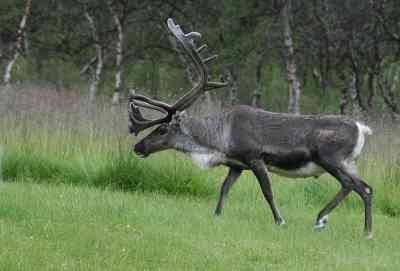
Caribou, also known as reindeer, are an iconic species of deer with a circumpolar distribution. In Quebec, they are predominantly found in the northern regions. These majestic creatures have the remarkable ability to traverse long distances, covering up to 6,000 km of tundra over their lifetime. Caribou are known for their unique feature of both males and females having antlers, making them the only deer species with this characteristic.
Male caribou possess branched antlers, adding to their impressive appearance. They inhabit the tundra or taiga regions and have a diverse diet that includes mushrooms, lichens, sedges, grasses, willows, and fruits. The mating season for caribou typically occurs from October to November, during which males may engage in battles to win over female caribou.
Caribou are nomadic animals, constantly moving in search of food. They are capable of undertaking extensive migrations, covering thousands of miles each year. During the spring season, large herds of caribou can be observed moving across the landscape. They are incredibly swift, reaching speeds of up to 50 miles per hour, and are also adept swimmers, capable of swimming at a speed of 6 miles per hour. Caribou are truly fascinating animals that captivate the imagination.
Here are some notable locations in Quebec where caribou can be found:
Radisson: A small town in the Eeyou Istchee region, Radisson offers tours provided by Animal Paquin, allowing visitors to see caribou. These tours operate from November to April and provide excellent opportunities to observe these majestic animals.
Grands-Jardins National Park: Located in the Charlevoix region, this national park is home to a significant caribou population. Exploring the park’s natural surroundings may offer sightings of these magnificent creatures.
Parc National de la Gaspésie: This beautiful park characterized by mountains is popular among hikers. September is an ideal time to visit as caribou gather with their young ones in preparation for the rutting season.
Mirage Outfitter: Offering unique snowmobile safaris, Mirage Outfitter provides a memorable and one-of-a-kind experience for seeing caribou in their natural habitat.
The best time to see caribou in Quebec is generally during September when they visit specific trails for their seasonal movements.
When observing caribou, it’s important to maintain a respectful distance and adhere to wildlife viewing guidelines to ensure the well-being and conservation of these magnificent creatures.
Black Bear
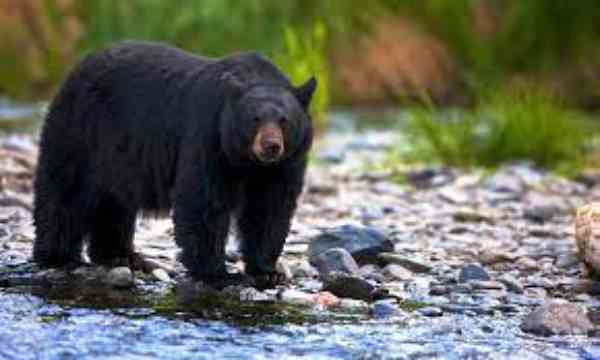
Black bears are abundant in Quebec, with an estimated population of around 70,000. They are one of the most common and feared animals in the region, often residing in dense forests. The black bear is the only bear species found in Quebec and is characterized by its small round ears and claws on its feet.
Male black bears are larger than females, with males weighing between 150 to 350 pounds and occasionally reaching weights of up to 600 pounds. Female black bears typically weigh between 90 to 175 pounds. Black bears can be found in various habitats, including tree-covered areas, meadows, mountains, swamps, and forests. While they are classified as carnivores, their diet primarily consists of plants, making them omnivores.
If you’re interested in observing black bears in Quebec, here are a few notable locations:
Station Touristique Duchesnay: Situated near Quebec City, this location offers two ways to observe black bears. Visitors can watch the bears from a safe distance by standing in a tower or get a closer view by going on a quad tour accompanied by a guide.
Reserve Faunique des Laurentides: Located near Montreal, this reserve provides opportunities to see wild black bears in their natural habitat.
Domaine de l’Ours Noir Baie-Comeau: This destination stands out as one of the best places to observe black bears. They offer observation chambers where visitors can sleep and observe the bears in close proximity.
The best time to see black bears in Quebec is during the beginning of summer. However, the ideal viewing time may vary depending on the specific area. Black bears tend to avoid human interaction, so in areas with significant human presence, they may be more active at night. In more remote areas, sightings are more likely to occur in the morning or at the start of twilight.
It’s important to remember that black bears are wild animals and should be observed from a safe distance. Respecting their space and adhering to guidelines for wildlife viewing ensures the well-being of both humans and bears.
Moose
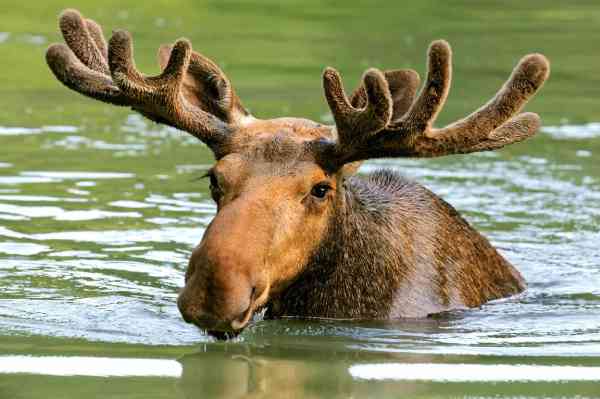
Moose are the largest and heaviest animals in the deer species. They have a high daily requirement of 25 to 30 kilograms of plant food and tend to seek out areas with abundant vegetation, often found in valleys. Moose also have a preference for water that is rich in minerals and are commonly found in forests with waterways running through them.
If you’re interested in seeing moose in Quebec, here are a couple of notable locations:
Matane Wildlife Reserve: This beautiful reserve offers moose safaris for tourists to observe moose in their natural habitat. Knowledgeable guides will help take you to the best spots for moose sightings. The safari season typically runs from the end of June to the end of September.
Jacques Cartier National Park: Located near Quebec City, this park is known for its moose population and is considered one of the best places to see moose in Quebec. Moose can often be spotted resting in water to cool down and alleviate the annoyance of mosquitoes. The moose is also the emblem of this park.
The best time to see moose in Quebec is during their feeding season, which spans from June to early October. Additionally, the rutting season can be an exciting time to observe moose, as the males and females are more active and may be more visible.
When visiting these areas to see moose, it’s important to adhere to park regulations and guidelines for wildlife viewing. Respecting the animals’ space and observing them from a safe distance ensures both your safety and the well-being of the moose.
White-tailed deer
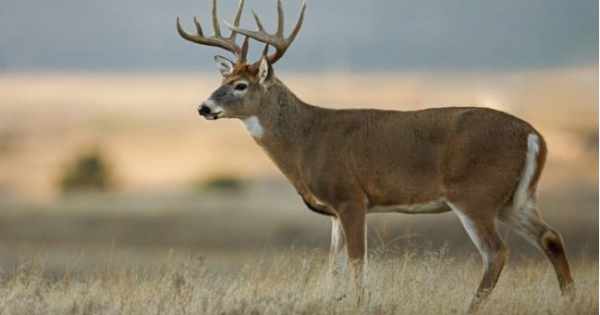
White-tailed deer are the most common animals found in southern Quebec. Here are some locations where you can find white-tailed deer in Quebec:
Boucherville National Park: Located near Montreal, this beautiful park is home to approximately 120 deer. However, the park is facing challenges due to the deer population exceeding the ecosystem’s carrying capacity. To observe the deer, you can take the Grand-Duc trail, which offers good opportunities for deer sightings.
Anticosti Island: This island is one of the largest and best places to see deer in Quebec. It is home to an impressive population of approximately 160,000 deer. Accessible by boat, Anticosti Island is both a national park and an outfitter, providing unique opportunities for observing and experiencing the deer population.
Michel-Chartrand Park: Although relatively small, this park near Montreal has a good number of deer, making them easily visible to visitors. It can be a convenient option for observing white-tailed deer without travelling far.
The best time to see white-tailed deer in Quebec is typically early morning or at dusk. However, their visibility can depend on the level of human disturbance in their habitats. White-tailed deer can be observed throughout the year in their native areas, allowing for wildlife viewing opportunities on various occasions.
Whale

Quebec is a remarkable destination for whale watching, boasting the presence of the world’s largest whale, the blue whale, as well as 13 other species. The abundance of food and favorable water conditions in Quebec make it an ideal habitat for many whale species. Whale sightings are so common that they can often be observed from the river shore, making Quebec a premier location for whale-watching experiences that attract visitors from around the world.
Here are some notable locations in Quebec for whale watching:
Forillon National Park: Many tour companies offer whale-watching tours within the boundaries of this national park. Visitors can enjoy the scenic beauty of the park while keeping an eye out for whales.
Tadoussac: This charming village is a popular destination for whale watching in Quebec. With an abundance of whales in the area, visitors can partake in tours and have the opportunity to witness these magnificent creatures up close.
Pointe-des-Monts: Another excellent spot for whale sightings, Pointe-des-Monts offers a wide variety of whale species. Visitors can enjoy observing whales from the river shores and experience the thrill of encountering these majestic marine animals.
The best time for whale watching in Quebec is typically from May to October. During this period, whales migrate to warmer waters, providing optimal opportunities for sightings. Planning a visit during these months increases the chances of witnessing these incredible creatures in their natural habitat.
Northern Gannet
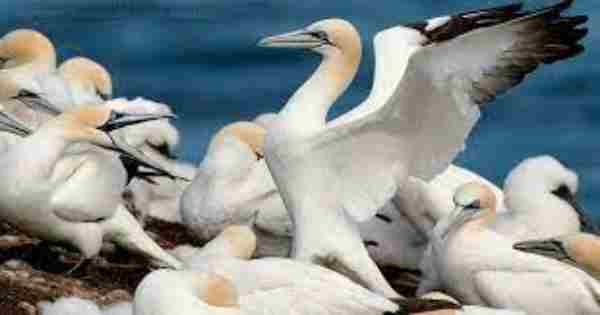
The northern gannet is a magnificent and captivating bird found in Northeastern Quebec. Both male and female northern gannets share a similar appearance. Adult gannets have long white bodies and wings that are designed to maximize airflow during flight. In favorable weather conditions, they can reach speeds of 55 to 65 kilometers per hour. Before taking flight, gannets need to warm up and may encounter difficulties while walking or taking off from the ground. They primarily search for food near the sea and establish nesting sites.
One of the best places to spot the northern gannet in Quebec is Rocher National Park, which is home to a significant population of these birds. Approximately 116,000 northern gannets can be found in this part of Quebec, providing ample opportunities for observation. Visitors to the park may have the chance to witness their mating rituals, as the gannets engage in chanting and singing, creating a beautiful and soothing atmosphere.
The best time to see northern gannets in Quebec is from mid-May to mid-October. During this period, the northern gannet is present as a migratory bird in the region, making it an optimal time for sightings.
Eastern Wolf
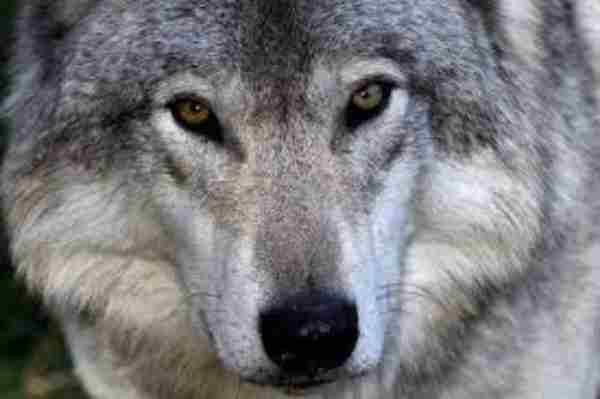
The eastern wolf, also known as the timber wolf or Algonquin wolf, is a distinct species of the grey wolf. If you’re looking to spot an eastern wolf in Quebec, there are a couple of recommended locations:
Omega Park: Located near Montreal, this park provides an opportunity to observe wolves in their natural habitat. It offers a zoo-like setting, allowing visitors to see wolves up close and even sleep in close proximity to them.
Mahikan Park: Situated near Saguenay, this beautiful park offers a chance to witness wolves in their natural environment. It provides a unique experience of observing and learning about these fascinating creatures.
The best time to see eastern wolves in Quebec is when they are most active, which typically occurs during early morning and dusk. Eastern wolves can be found roaming throughout Quebec throughout the year.
Bald Eagle
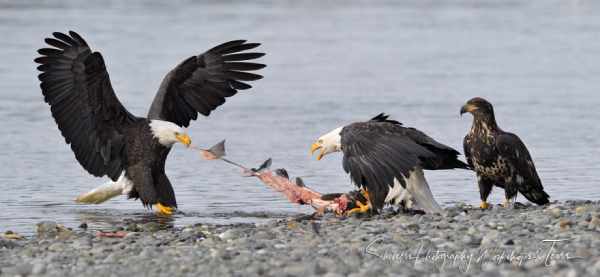
Bald eagles, with their representation of courage and strength, are beloved icons in North American culture. If a bald eagle happens to lose feathers on one wing, it will shed feathers on the other wing to maintain balance. These majestic birds have a white head and tail, brown body, and yellow legs and bills. Their diet mainly consists of fish, and they prefer habitats near rivers, lakes, and reservoirs.
If you’re looking to spot bald eagles in Quebec, one recommended location is near Temiscouata National Park, where the bald eagle is the emblem of the park. They can be observed perched on trees or near rivers in this area, and if you’re lucky, you might even spot them closer to the ground.
The best time to see bald eagles in Quebec is during periods of low human activity, such as the early morning or dusk. Bald eagles can be observed flying in the park throughout the year.
Seal

Seals are marine mammals that inhabit cold seas and have a distinctive tapered body shape, being round in the middle and narrowing towards the end. One way seals are classified is based on whether they have external ears or not. Being carnivores, seals primarily consume fish as their main source of food. They are specialized marine animals that are often found in polar regions.
Seals are known for their exceptional swimming and diving abilities. They are capable of diving to depths of 150-250 meters or even deeper and can stay submerged for 20-30 minutes. While they cannot swim in the same manner as whales or dolphins, seals are strong and agile swimmers. They typically come ashore once a year for breeding purposes.
It’s important to note that seals have been hunted for their meat in certain regions. However, in many places, they are protected and conservation efforts are in place to ensure their survival. Seals thrive in cold and temperate regions, where they have adapted to the unique challenges of their marine environments.
Bic National Park sounds like a particularly good spot for observing seals from the shore, but it’s important to respect their space and avoid disturbing them while they are resting.
Additionally, it’s interesting to note that seals can be observed in Quebec throughout the year, and they are active at various times of the day. This provides visitors with a chance to witness their behaviors and appreciate their presence in the marine ecosystems of Quebec.
Remember, when observing seals or any wildlife, it’s important to prioritize their well-being and follow any guidelines or regulations in place to protect these animals and their habitats.
FAQs
What animals is Quebec known for?
The wildlife of Quebec is diverse, with many species found throughout the province. Some of the most popular animals include the majestic moose, the stealthy black bear, and the adorable beaver. Quebec is also home to a variety of birds that add their distinct chirps and melodies to the province’s music.
What is the most common animal in Quebec?
The snowshoe hare, also known as the varying hare, can be found throughout Quebec’s forests, meadows, and wetlands.
What is the national animal of Quebec?
The Caribou
Final Words
In conclusion, animals play a significant role in Quebec’s cultural heritage and biodiversity. Our province is known for its diverse wildlife, with iconic species such as the caribou and the moose. However, it is essential to address the challenges and threats that animals face in our rapidly changing world.
Habitat loss, climate change, and illegal hunting are among the issues that we must address to ensure the continued survival of Quebec’s beloved animals. We must work together to protect the natural habitats of animals and promote conservation efforts that will protect biodiversity for future generations.
Reference:
- https://www.quebecmaritime.ca/en/road-trips-and-getaways/wildlife-observation
- https://www.sqrc.gouv.qc.ca/representation-quebec-canada/le-quebec/symboles-en.asp
- https://www.bonjourquebec.com/en/to-see-and-do/outdoor-activities/wildlife-observation

Zahra Makda
Growing up enjoying the beauty of my village, a good passion for nature developed in me from childhood. Following my passion for the natural world, I have chosen zoology for my graduation, during my undergraduate degree, I participated in many nature trails, bird watching, rescues, training for wildlife conservation, workshop, and seminars on biodiversity. I have a keen interest in invertebrate biology, herpetology, and ornithology. Primary interests include studies on taxonomy, ecology, habitat and behavior.

